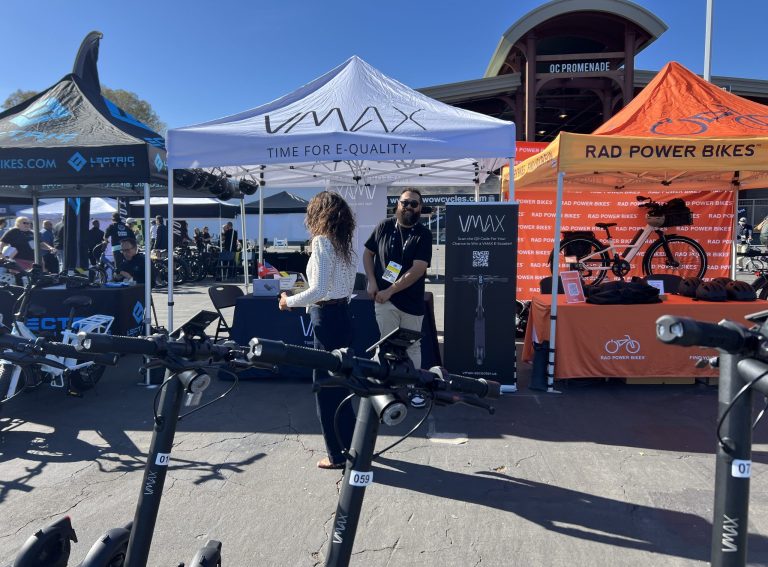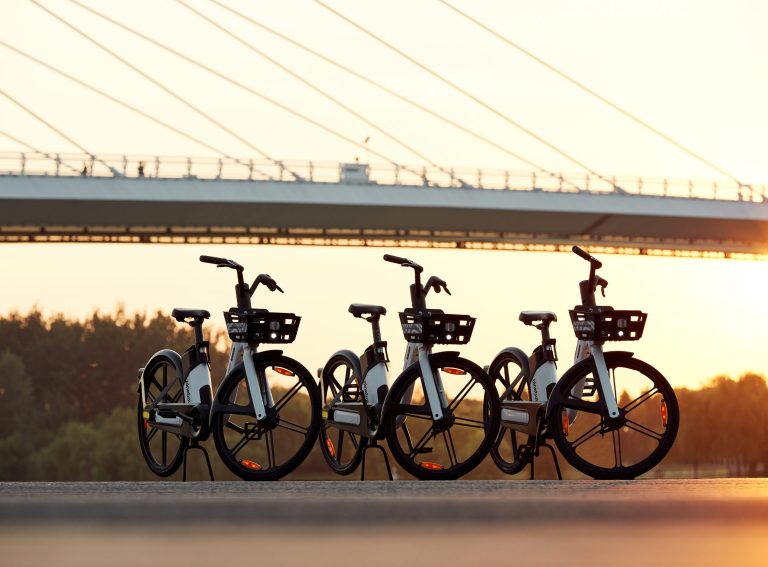Author: Phil Ellis, CEO and Co-Founder, Beryl
For any micromobility scheme to be a success, it has to understand those it caters for.
Every year, Beryl undertakes a large-scale survey that allows us to understand our users, identify trends and ensure that we’re providing services that are accessible and work for everyone.
This year’s data has thrown up some very interesting finds relating to micromobility’s role as part of a wider transport network and its value in an increasingly expensive world.
Our Annual Rider Report obtained feedback from more than 3,000 riders across five Beryl-operated micromobility schemes this year; including Norwich, Watford, Hereford, Bournemouth, Christchurch and Poole, as well as the Isle of Wight. Riders from the Greater Manchester Cycle Hire scheme, which is run by the Greater Manchester Combined Authority but uses Beryl vehicles, were also surveyed.
Practicality over pleasure
Looking at why people sign up to our services is always interesting and this year we have seen a complete reversal in people’s motivations.
(see chart) Practicality has overtaken pleasure, with convenience (35%) and speed (25%) now the two most important reasons for signing up. Fun and novelty were the two most important reasons in 2021, but have dropped by 12% (now 23%) and 14% (now 20%) respectively. Cost has doubled in importance this year, with 20% now stating that it was the most important reason for signing up.
Other practical factors such as using Beryl vehicles for errands and shopping (+5%), and education/school run (+7%) have also increased, while riding for leisure purposes has dropped from 75% to 63%.
Greater connectivity
One of the standout findings from the data is a big increase in riders connecting their Beryl trips with public transport, with 53% overall compared to 29% in 2021. Some of the regional increases in this section were remarkable, with 71% of respondents on the Isle of Wight for example, stating they used Beryl to connect to public transport compared to just 15% last year.
Our schemes are always designed to provide the best possible service for users by being delivered both in partnership with cities and in consultation with communities and key stakeholders. By taking this approach, we are able to ensure better connectivity with local transport infrastructure. In practical terms, this means ensuring good availability near existing transport hubs.
Practicality is a theme that runs right through the results. More people are using Beryl for journeys such as commuting, which has more than doubled from 27% in 2021 to 55% this year. With the majority of these trips being under 2.5km, this increase has amplified our value as a solution for first and last mile journeys.
Multimodality
One of our greatest assets is that we are the only UK operator that can provide true multimodality, with bikes, e-bikes and e-scooters all under the same scheme, controlled by one app.
At the time of the survey, our Norwich scheme offered riders the chance to use bikes, e-bikes and e-scooters. Riders using the Bournemouth, Christchurch and Poole scheme could take out bikes and e-scooters (in Bournemouth and Poole), and our Hereford and Watford schemes both utilised bikes and e-bikes.
The data really demonstrates the benefits of offering a range of services to users in those schemes. Riders are embracing variety and, compared to 2021, are much more likely to try multiple modes. The overall number of people riding bikes, e-bikes and e-scooters has more than doubled from 7% to 15%, while those riding bikes and e-bikes (+9%) and bikes and e-scooters (+4%) have also increased. The overall number of riders just using bikes has dropped by 18%.
Swapping four wheels for two
One of the most pleasing trends that we unearthed is that the focus on practicality seems to correlate with a greater willingness to leave the car at home. The responses show that over 50% of those who use Beryl vehicles for business have reduced their usage of private cars. Allied to this, 38% of all riders have reduced their car usage since using Beryl, an impressive 29% increase on last year’s data.
By getting more people out of the car we are not only helping to cut traffic congestion and harmful carbon emissions, we are also boosting users’ mental and physical health and cleaning up the air for present and future generations.
Saving money with micromobility trips
It is an unfortunate trend that rising utility bills, interest rates, food prices and fuel costs in the UK this year have led to more and more people having to tighten their belts financially. In many cases, that has forced people to rethink how they get around, particularly for shorter or connecting journeys.
Micromobility presents an obvious solution to those looking to save money. Compared to vehicle ownership, it’s incredibly cost effective and removes the need to pay for charging, fuel, insurance, maintenance, security and any of the extra costs associated with a private vehicle.
In light of this, I don’t think it’s a coincidence that we are not only seeing increased ridership and decreasing vehicle use by those signing up, but also more riders using our vehicles to commute or part-commute.
Throughout 2023, we will continue to encourage these trends and champion micromobility as a cleaner, greener alternative to the car.
The questions were sent via e-mail and the Beryl app and are designed specifically to help us understand riders’ motivations as well as their behaviour before, during and after riding our vehicles. Of those who responded, 29% had signed up to Beryl but had not yet taken a ride, while 71% had taken at least one ride.











